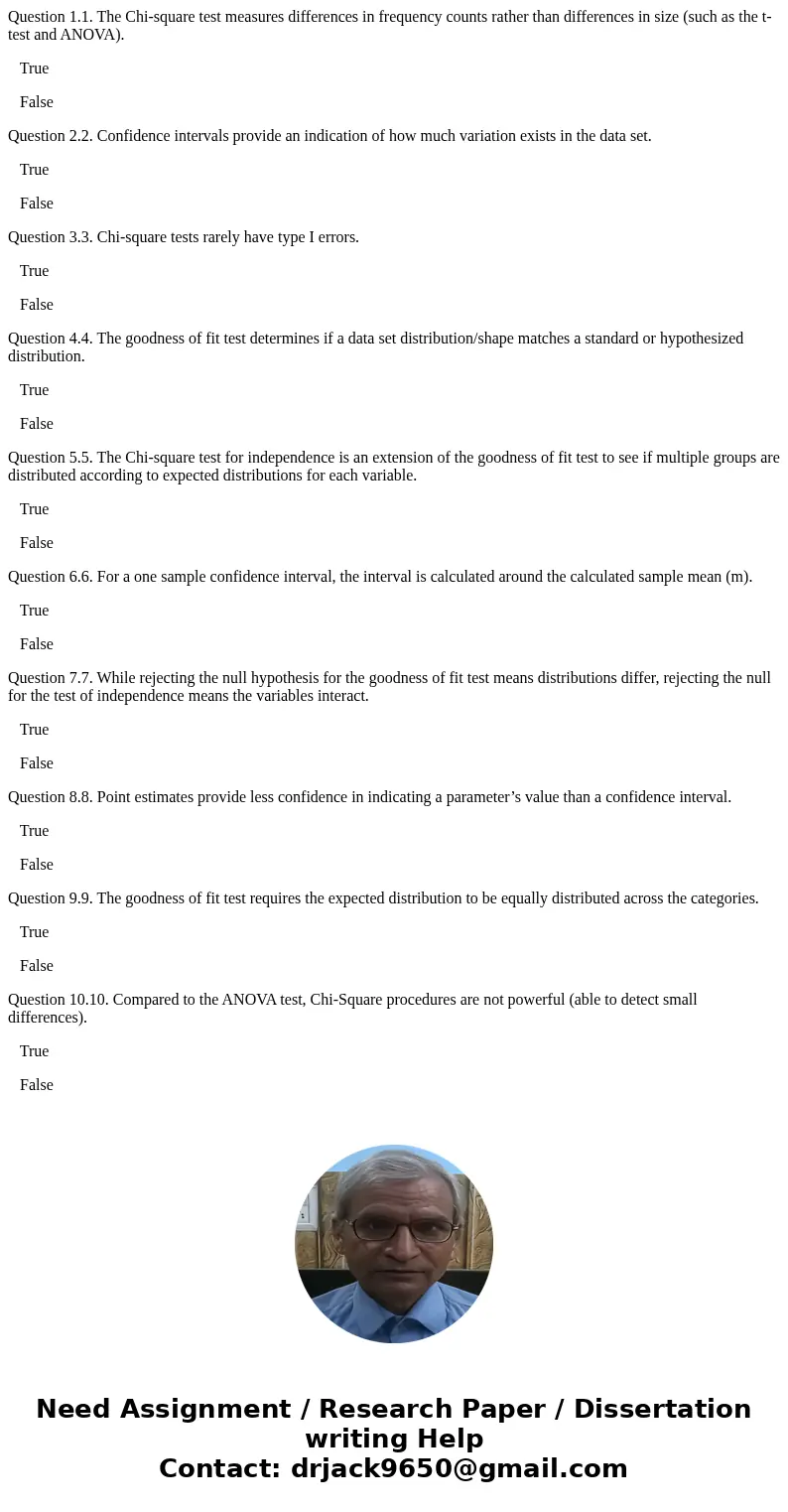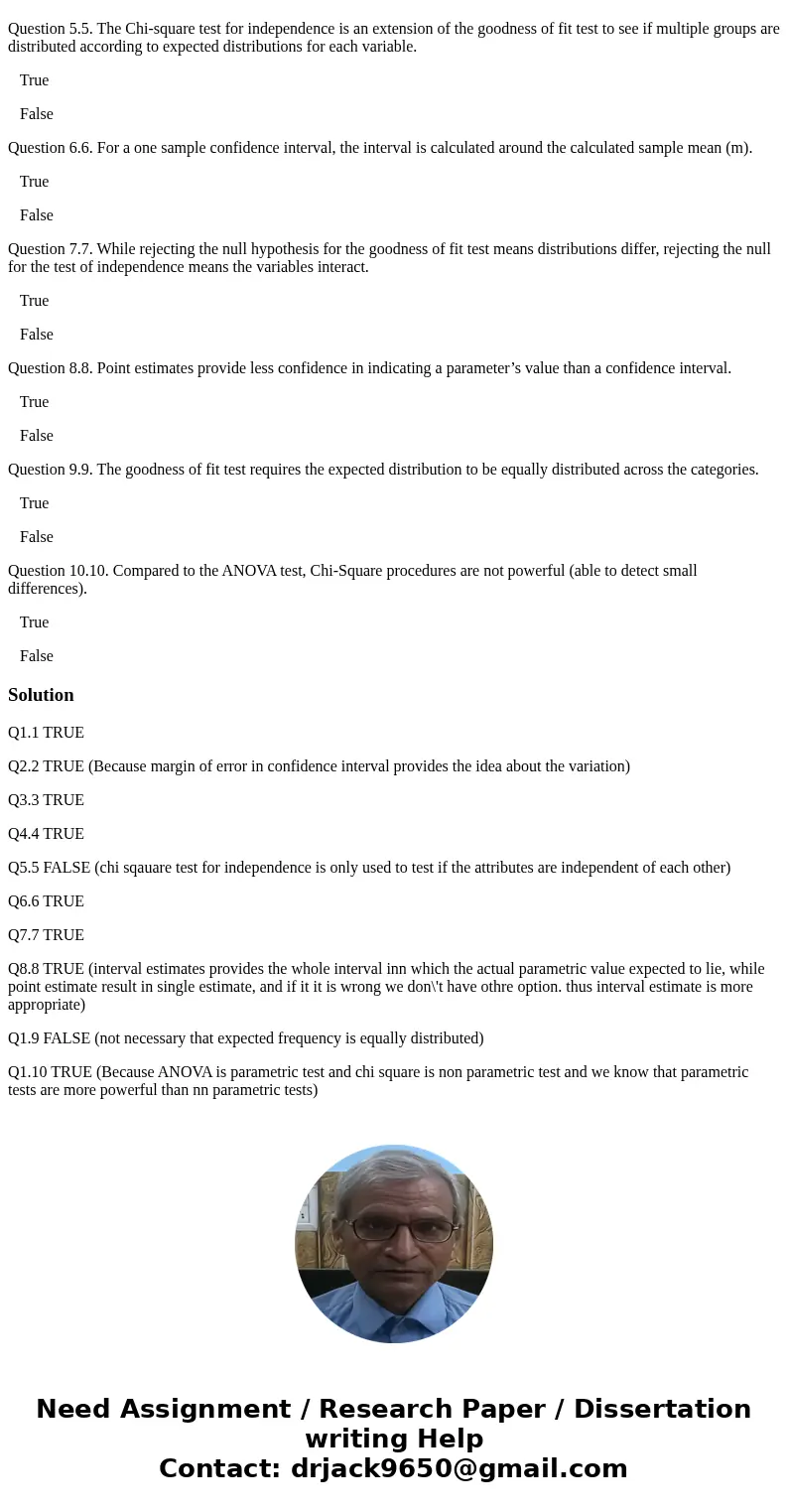Question 11 The Chisquare test measures differences in frequ
Question 1.1. The Chi-square test measures differences in frequency counts rather than differences in size (such as the t-test and ANOVA).
True
False
Question 2.2. Confidence intervals provide an indication of how much variation exists in the data set.
True
False
Question 3.3. Chi-square tests rarely have type I errors.
True
False
Question 4.4. The goodness of fit test determines if a data set distribution/shape matches a standard or hypothesized distribution.
True
False
Question 5.5. The Chi-square test for independence is an extension of the goodness of fit test to see if multiple groups are distributed according to expected distributions for each variable.
True
False
Question 6.6. For a one sample confidence interval, the interval is calculated around the calculated sample mean (m).
True
False
Question 7.7. While rejecting the null hypothesis for the goodness of fit test means distributions differ, rejecting the null for the test of independence means the variables interact.
True
False
Question 8.8. Point estimates provide less confidence in indicating a parameter’s value than a confidence interval.
True
False
Question 9.9. The goodness of fit test requires the expected distribution to be equally distributed across the categories.
True
False
Question 10.10. Compared to the ANOVA test, Chi-Square procedures are not powerful (able to detect small differences).
True
False
Solution
Q1.1 TRUE
Q2.2 TRUE (Because margin of error in confidence interval provides the idea about the variation)
Q3.3 TRUE
Q4.4 TRUE
Q5.5 FALSE (chi sqauare test for independence is only used to test if the attributes are independent of each other)
Q6.6 TRUE
Q7.7 TRUE
Q8.8 TRUE (interval estimates provides the whole interval inn which the actual parametric value expected to lie, while point estimate result in single estimate, and if it it is wrong we don\'t have othre option. thus interval estimate is more appropriate)
Q1.9 FALSE (not necessary that expected frequency is equally distributed)
Q1.10 TRUE (Because ANOVA is parametric test and chi square is non parametric test and we know that parametric tests are more powerful than nn parametric tests)


 Homework Sourse
Homework Sourse